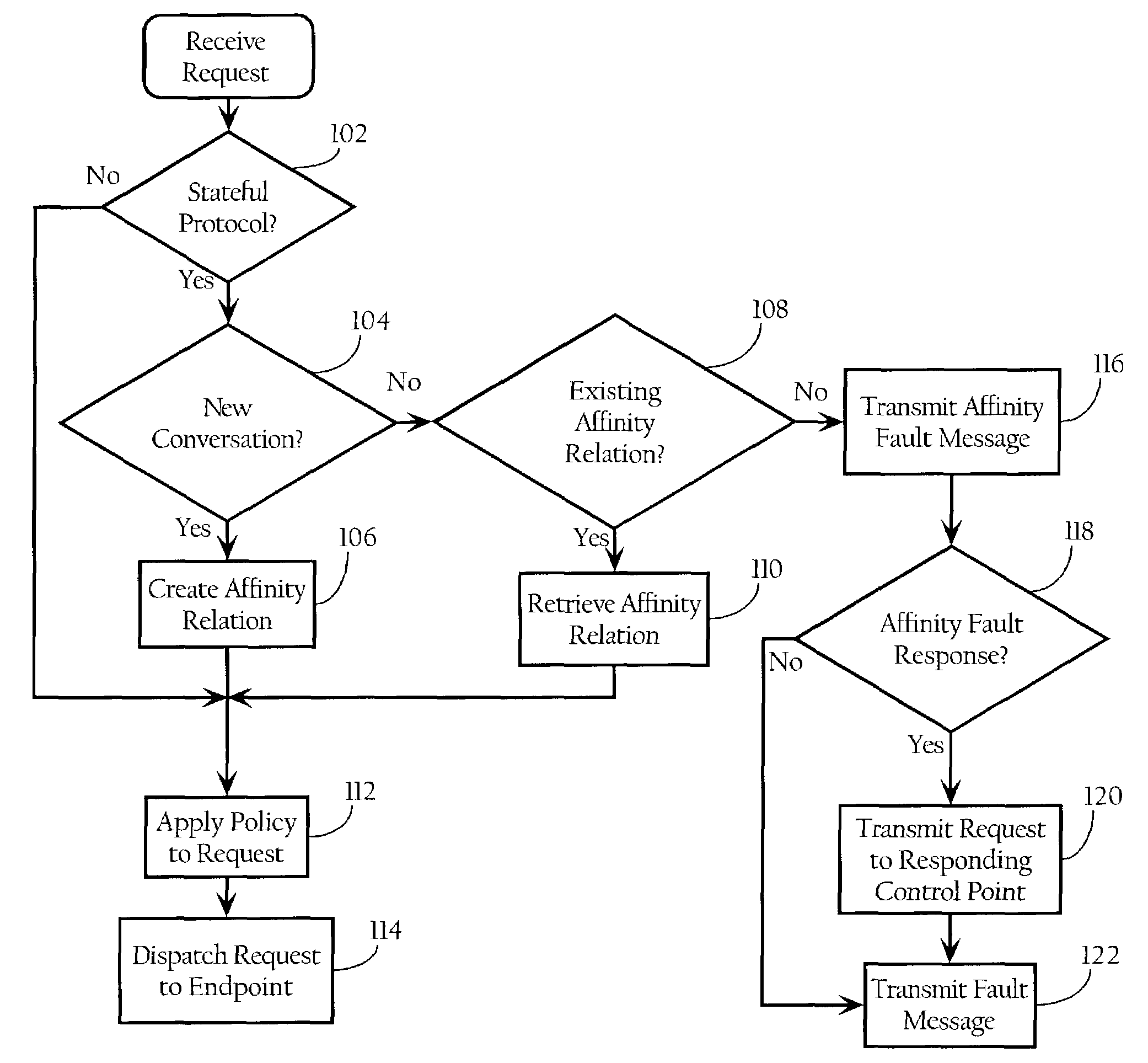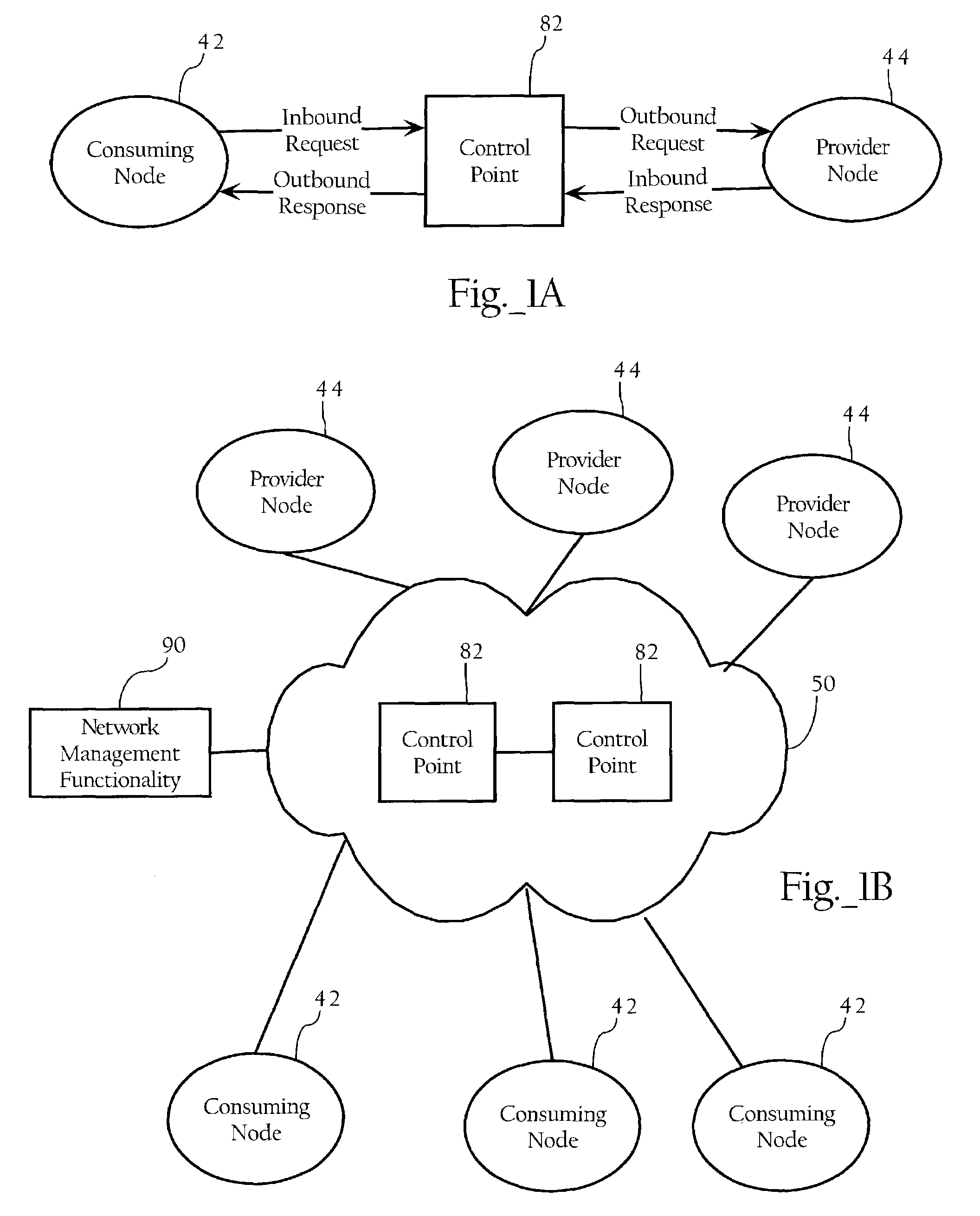Stateful messaging gateway
a messaging gateway and state technology, applied in the field of network resources, can solve the problems of ineffectiveness, inefficiency, costly, etc., and achieve the effect of avoiding the failure to leverage the enterprise's existing network infrastructure investment, reducing the cost of operation, and reducing the service life of the broker
- Summary
- Abstract
- Description
- Claims
- Application Information
AI Technical Summary
Benefits of technology
Problems solved by technology
Method used
Image
Examples
Embodiment Construction
)
[0020]FIGS. 1A and 1B are functional block diagrams illustrating the functionality and basic operating elements associated with an embodiment of the present invention. Provider node 44 is a network addressable computing resource operably connected to computer network 50. In one embodiment, provider node 44 is an end-system that hosts a Web- or other network-based application accessible to consuming applications using predefined interfaces and protocols. Consuming node 42 is a network addressable end-system that consumes or invokes the computing resources associated with one or more provider nodes 44. In one embodiment, consuming node 42 hosts a Web-based application that consumes one or more Web services hosted by one or more provider nodes 44, as discussed more fully below. Computer network 50 generally refers to a variety of computer network architectures including one or more intermediate systems operative to route messages between end-systems operably connected thereto. As FIG....
PUM
 Login to View More
Login to View More Abstract
Description
Claims
Application Information
 Login to View More
Login to View More - R&D
- Intellectual Property
- Life Sciences
- Materials
- Tech Scout
- Unparalleled Data Quality
- Higher Quality Content
- 60% Fewer Hallucinations
Browse by: Latest US Patents, China's latest patents, Technical Efficacy Thesaurus, Application Domain, Technology Topic, Popular Technical Reports.
© 2025 PatSnap. All rights reserved.Legal|Privacy policy|Modern Slavery Act Transparency Statement|Sitemap|About US| Contact US: help@patsnap.com



